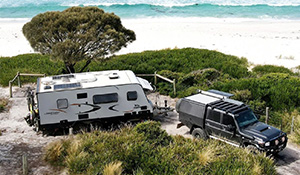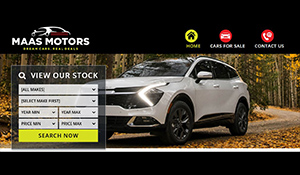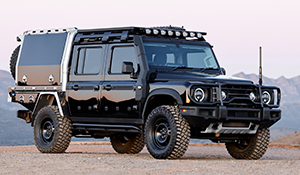Hyundai reveal ‘Kona’ SUV
Hyundai’s SUV lineup is about to expand beyond the Santa Fe, Santa Fe Sport (which isn’t sold here) and Tucson, with the arrival of the Kona.
The compact “urban” SUV – Hyundai’s first in this market segment - made its global debut in June and is now on sale in Korea. North American and European markets will follow, with Australian delivery expected by October.
Aimed at the likes of Toyota’s C-HR, Mitsubishi’s ASX and the Nissan Juke, the five-seat Kona features distinctive, modern styling and will be offered – at least initially – with a choice of petrol engines.
All-Wheel Drive is restricted to the upper model grades, with entry-level models being exclusively 2WD. To suit, Hyundai says the rear suspension systems on the 2WD and AWD versions will differ.
“With the Kona, we have created a stylish and highly functional compact SUV, perfectly suited to the needs of customers who pursue challenging, action-filled lifestyles,” said Euisun Chung, Vice Chairman of Hyundai Motor Company. “[With the Kona], we aim to set new standards for the compact SUV segment, with appealing design, cutting-edge connectivity and class leading safety features.”

Hawaiian Style
Like Hyundai’s previous SUV model names, the Kona takes its moniker from America, specifically the coastal region of Hawaii’s Kailua Kona (Big Island).
Stylistically, the ‘cascading grille’ is one of the Kona’s two standout design features, the other being the split lighting arrangement at each end.
The grille, already seen on the i30, will be rolled out across other Hyundai product in the future and has something of an Audi look to it, while the split lighting is reminiscent of Citroen (as is the entire front end). LED DRLs make up the upper light cluster, with the headlights and indicators lower down, encased in dark plastic cladding - what Hyundai calls ‘armour’ – that extends to the wheelarches.
At the back, it’s a similar story, with tail lights above and the indicators, brake lights and reversing lights below in a cladded segment.
That cladding is well integrated to the overall design and gives the Kona a chunky, purposeful look, while the roof and mirror caps are in a contrasting colour, reflecting modern trends.

Inner Space
Hyundai are claiming class-leading interior space with the Kona, thanks to clever packaging of the mechanical and suspension componentry that minimises intrusion.
In addition to offering more passenger room, particularly in the rear seats, this repackaging also improves luggage space. The latter includes what Hyundai calls a two-level loading floor that allows easier loading of bulky items like bicycles and golf clubs.
The dash features a strong horizontal character line and is said to be, overall, simpler than the exterior and includes a floating-style central monitor. In a Hyundai first, the driver gets a head-up display that, rather than projecting essential information onto the windscreen, uses a pop-up glass panel behind the instrument cluster.
Other notable tech and use-of-space features include a centre console-mounted wireless smartphone charger and a variety of infotainment screen sizes, depending on model grade.
Advanced connectivity will be standard, while features like rear-view camera display, digital radio and 4G telematics will be available in certain model grades or for specific markets.

Power and Drive
From launch, the Kona will be available with a choice of petrol engines, but a diesel is likely to be added to certain markets.
The base engine will be Hyundai’s 2.0-litre MPI petrol four, with outputs of 110kW and 179Nm, paired to a conventional six-speed automatic. Stepping up to the 1.6-litre T-GDI turbocharged petrol four gets you 130kW and 265Nm, with this powerplant matched to a seven-speed DCT.
Hyundai says a 1.0-litre three-cylinder turbo petrol will be offered in Europe and a 1.6 diesel will also be available in certain markets.
Performance from each drivetrain can be adjusted through selectable driving modes – Normal, Sport and Eco – that adjust throttle response, torque distribution and transmission shift times.
Four-wheel drive will be optional, Hyundai says, so it’s possible the entire Kona lineup could revert to 2WD only, depending on market acceptance of the AWD version.
Suspension consists of MacPherson struts up front, but the rear gets a different layout for 2WD and AWD versions. In 2WD, torsion bars are employed, while AWD versions get a dual-arm multi-link layout.
Despite the Kona’s urban focus, Hyundai says the 4WD system, combined with the front suspension geometry and ground clearance, will provide more refined body movement and better driving dynamics to make the new arrival capable off-road.

Passive and Active
Safety features start with Advanced High Strength Steel in more than half of the body structure, plus advanced energy dispersion technology that distributes impacts across multiple structures in the event of an accident.
Active safety tech includes Forward Collision Avoidance Assist, Lane Keep Assist, High Beam Assist, Driver Attention Warning, Blind Spot Collision Warning and Rear Cross Traffic Collision Warning systems.

Kona in Aus
For Australia, the Kona will be offered in three model grades, with AWD and the turbo petrol engine confirmed for the upper two. Advanced safety tech will be available across the range, with the HUD limited to the top grade.
Full specs and pricing are yet to be revealed, but Hyundai says the Kona will be competitive against the C-HR, Honda HR-V, Mazda’s CX-3 and Australia’s top seller in this segment, Mitsubishi’s ASX.










